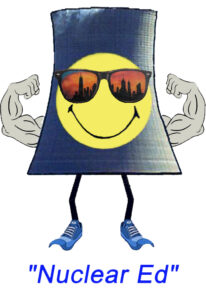 Nuclear Education by Virginia Recycles Used/Spent Nuclear Fuel’s – NUCLEAR ED
Nuclear Education by Virginia Recycles Used/Spent Nuclear Fuel’s – NUCLEAR ED
Nuclear Ed’s – Nuclear Knowledge Quiz Series
Test yourself , maybe also challenge a friends Nuclear Knowledge. By clicking on the “TEST YOURSELF“ link you will be brought to Nuclear Ed’s – Nuclear Knowledge Quiz Series page. Once there Choose a quiz that will reveal a few slides that will provide you with information that will be in the quiz. Some of the quizzes may have been a review of material that had been seen in one of Jose Negron’s T-3 radio show. Review the slides or scroll down past the slides right to the quiz.
We would greatly appreciate if you could fill out some information as well as any thoughts requests or assistance you may be able to provide on this site or Nuclear.Ed‘s Facebook Page. Take the quiz. Good Luck – if you know it all, then luck will have nothing to do with Nailing a 100% on the Quiz!
Watch “Nuclear Power – Now & In the Future” Now!
Watch “Recycling the Ashes of Nuclear Fission” Now!
Radio & Online Interviews of Steve Curtis & Tom Dolan on
Recycling Nuclear Energy

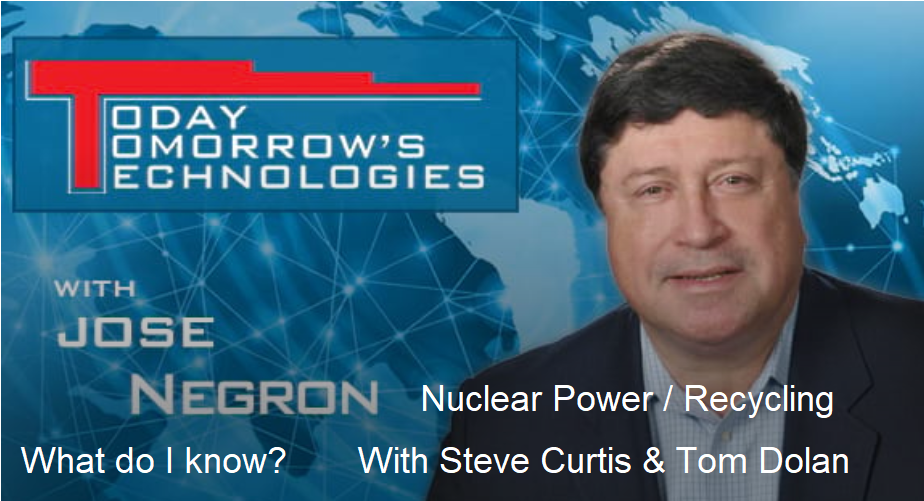
#1 – Nuclear Power Now & in the Future
03-24-2020
 #2 – Recycling – The Ashes of Nuclear Fission
#2 – Recycling – The Ashes of Nuclear Fission03-31-2020
 #3 – All Renewables? Will Future Energy Needs be Met?
#3 – All Renewables? Will Future Energy Needs be Met?04-07-2020

Nuclear Power Recycling – What do I know?
10-22-2019

Recycling Nuclear Fuel – Is the time now for the US?
12/10/2019

Earth Day 2020 SWVA

A Short Case for Recycling Used Nuclear Fuel – Steve Curtis / Tom Dolan
Nuclear energy is absolutely necessary to attain air pollution and carbon goals stated throughout the world. However, although the rest of the world is moving strongly into nuclear power, the United States has lagged over the last 40 years in nuclear energy development. To move this along, it will take leadership and education to the public. In this respect, nuclear advocacy has been conspicuously silent. This has been interpreted by the public that the anti-nuclear forces are right and that we should eliminate anything nuclear. This is the exact opposite of the truth, but perception is truth to each individual.
The biggest complaint in the anti-nuclear community is the inability of the nuclear industry to deal with used nuclear fuel. While it is clearly being handled safely, it is also clear that no long-term solution has emerged. This is (or should be) embarrassing to the professional nuclear community. The simplest part of the fuel cycle is the “back end” and our community has allowed political rhetoric to overshadow logical solutions to the problem. The existing nuclear community is being dominated by the long-standing ideas developed in the early days of the industry. The idea of throwing away a resource when only 1% of it has been used is completely against the modern-day idea of preserving the earth’s assets through recycling. So, part of the problem is getting the nuclear industry to reevaluate their thinking through the eyes of 21st century realities.
Recycling is being conducted in France1, and has been conducted since the beginning of their nuclear energy program. France supplies about 75% (down from 80%) of their electricity from nuclear power.2 In addition, the UK, Russia, China, Japan and India have programs to recycle their used nuclear fuel.3 So, what happened to the United States where nuclear power was born? One issue is the stated fear that recycling will unleash plutonium that may end up being used to make a bomb. However, except for a demonstration project to illustrate that it was possible, no country has taken this route.4 Not even North Korea. If any country wants plutonium suitable for a bomb, they simply design a reactor for this purpose and leave the fuel in for far less time than commercial reactors do. The reason is that plutonium is way too contaminated by higher isotopes of plutonium which make it difficult to produce a bomb. It is simply better to start from scratch as North
Korea did. So, the issue of proliferation of plutonium from commercial used nuclear fuel, while an object of concern, is not a major problem. Another issue is the massive misinformation left unanswered in the public’s eye regarding nuclear power. Eisenhower and Kennedy were outspoken on the benefits of nuclear power. Since Johnson, however, the issue has either been ignored or criticized by our leaders. Strong leadership would greatly help advance the cause, but there are enough grass-roots efforts in play that nuclear energy is slowly becoming “cool” again.
There are two different types of recycling for used nuclear fuel: aqueous (chemical) and non-aqueous. Non-aqueous methods include (electro-chemical) pyroprocessing and “liquid fuel” designs. Aqueous recycling is the method being used in the world today and involves dissolving all the fuel rod materials in a strong nitric acid bath and using chemistry to separate the different parts. Pyroprocessing uses molten salt as the solvent and electroplating as the separation method. Pyroprocessing has been around for almost 60 years, but only in the experimental prototype stage. Each has advantages and disadvantages like everything else, but either should be considered superior to discarding used nuclear fuel. I also find that the public does not accept “waste” burial, but loves the idea of recycling and the fact that there is a tremendous amount of energy left to produce carbon and pollution-free power. The liquid fuel design requires a lesser degree of used nuclear fuel pre-processing. Basically, the material is crushed into small particles and dissolved into the solvent (either sodium or molten salt). After some initialization of the mixture by actinide or fissile fuel, the reaction can go on indefinitely using only used nuclear fuel.
Separation of used nuclear fuel means, basically, separating four distinct chemical groups in the fuel rods. The vast majority of the material is uranium. New fuel is about 96% uranium-238 and about 4% uranium-235. These are different isotopes of uranium and uranium-235 is the material that fissions and produces energy. When the used fuel is removed, the four basic categories of material remaining in the fuel material are5:
Uranium – 95% of uranium entering the reactor never changes. Only about 1% of it is uranium -235.
Plutonium – about 1% of the used nuclear fuel. Plutonium is actually bonus energy. Some of theuranium-238 transforms into plutonium-239 which can also fission and produce energy. When the reactor fuel is removed, there is some left that has not fissioned yet, but could be used for energy in the future.
Minor Actinides – less than 1% are higher isotopes of elements heavier than plutonium. Together with plutonium, these are called transuranics, or “TRU” because they are heavier than uranium.
Fission Products – This is what is left after a nucleus fissions – two atoms per fission. They emit heat and radiation, but they remain inside the fuel material. This comprises 3% of the material in used nuclear fuel, but is the major reason used nuclear fuel must be handled carefully and shielded from people.
While either recycling method would be preferable to burial, the method used mainly depends on which kind of reactor the fuel is to be recycled into. These fall into two main categories, although there are several types in each group. With only a handful of exceptions, our current reactors in the US and around the world use water to slow down the fission neutrons to lower energies so they are more likely to cause more fissions in the neutron chain reaction. Canadian reactors use heavy water to allow the fuel to be natural uranium, thus eliminating the enriching process. Some advance reactors (and there is a long history of these) are fast neutron reactors in which the neutrons are not slowed down and water is not used in the cooling process. The group of nuclear reactions that fast neutrons cause is quite different than those that slow neutrons cause. Fast neutrons actually extract energy from and transform plutonium and the higher transuranics far, far more effectively than do slow neutrons. From a used nuclear fuel toxicity perspective one could view a water-cooled reactor with recycling as a trash compactor, while a fast reactor takes the role of incinerator (without the pollution and carbon signature, of course).
Using water-cooled reactors to recycle used fuel, as France currently does, means that mixed oxide (MOX) fuel, a mixture of uranium oxide and plutonium oxide, is the resulting recycled fuel form. The U.S. does not do this. To recycle the plutonium in used fuel, the French use an aqueous chemical process involving large volumes of concentrated nitric acid in very large, expensive piping systems. They separate plutonium to re-mix with uranium oxide to make MOX. Each recycle reactor is only partly fueled with MOX, the rest being the usual uranium oxide. The drawback with this system is that the same material can be economically recycled only once or possibly twice. Further recycled fuel material contains increasing fractions of plutonium isotopes that (1) make obtaining and controlling a chain reaction more difficult, and (2) presents more worker radiation protection challenges during fuel fabrication.
So the regular commercial water-cooled reactors in use today can only reduce the waste volume somewhat, but do not eliminate enough of it to be considered a solution to the used fuel disposition problem, nor do they extract much more than 1% of the nuclear energy stored in the original uranium.
Fast neutron reactors offer important advantages and special capabilities.6 They use uranium far more efficiently than water-cooled reactors, and can convert useless uranium-238 (over 99% of the uranium mined) to plutonium-239, which is a fine reactor fuel. In water-cooled reactors, nearly all of the uranium-238 is wasted (an additional 80% of it was wasted during the uranium-235 enrichment process required for water-cooled reactors, so this is a vast untapped energy resource). Unlike water-cooled reactors, fast reactors can consume fuel that has been recycled many times. This is how it is able to extract nearly all the energy sequestered in uranium fuel – like increasing an SUV’s gas mileage from 30 MPG to 3,000 MPG. Perhaps more importantly, experience shows that there is no limit to the number of times fuel material can be recycled in metal-fueled fast reactors, unlike water-cooled reactors. This means that the final residue waste after multiple recycles consists almost entirely of fission products. Their radioactivity disappears after a few hundred years, so a geologic repository for them need not last for more than, say 1,000 years (actually 100 years is sufficient to reduce the radiation signature to tolerable levels). This is enormously shorter than the current 1,000,000 year requirement.
The most advanced fast neutron reactor designs, especially those of the US, use a metal fuel form, not an oxide, for a number of technical reasons including safety, ease of recycling, simple fuel fabrication, robust fuel performance, and high neutron efficiency. Pyroprocessing is naturally suited to metallic fuels because metallic fuels are easily fabricated in heavily shielded hot cells using remote-handling technology.
Pyroprocessing, however, employs a different method of recycling than the aqueous chemistry used in recycling oxide fuels from water-cooled reactors.7 Pyroprocessing is used in non-nuclear industries, so there is US industrial experience, albeit with different materials. It dissolves used nuclear fuel using electrical current that partly, but adequately, separates the fission products from the uranium and plutonium in the used metallic fuel. A rough analogy is the operation of a battery, where electric currents force the movement of materials. This is a more compact process than the aqueous processing used for water-cooled reactor fuel. Early indications are that it will be a good deal less expensive. Both the characteristic facility size and cost make this a technology that can be deployed at regional locations that are already reactor sites, rather than at one gigantic national center as France does. With one additional step, used water-reactor fuel can be reduced to metallic form suitable as feed for pyroprocessing then directly into fast reactors.
No pyroprocessing facilities exist outside the prototype stage, but Argonne National Laboratory successfully operated such a reactor/recycle system, called the Experimental Breeder Reactor II (EBR-II), for 30 years in Idaho.8 The process used the system described in the last paragraph to power a 20 MWe sodium-cooled fast reactor during that time while constantly recycling the fuel. No incidents were experienced. In fact, two extreme accident failure experiments were conducted to test the safety of the system,9 This was done to test the passive safety of the system (the reactor fuel remains undamaged, even if there is no intervention by operators or by any back-up or safety systems). In one, a total loss of power to the system (a Fukushima-like scenario) was inflicted by the operators. In the second, the operators turned off the cooling pumps (simulating a Three Mile Island scenario). In both instances, the reactor shut down with no damage and was able to be quickly restarted for normal operations. Both of these experiments were conducted on the same day in April 1986.
Argonne’s EBR-II in IdahoThe prototype system, called the Experimental Breeder Reactor at Argonne-West in Idaho, was shut down in 1994 for political reasons and has now been decommissioned, but the Department of Energy is about to build a larger, similar test reactor using the same concepts. This project will provide much more accurate cost projections for fast reactors.
The Argonne scientists have designed two capacities of facilities suitable to commercialize this process. One is a 100 tons per year facility at a cost of $500 Million.10 This could feed a 1 GW fast reactor power plant which could replace an existing coal or natural gas facility or an existing light water reactor complex. There also exists a design concept for a full-scale commercial 2,000 Tons/year facility that would cost $7 Billion. Based on only fees collected from the DOE for reprocessing used nuclear fuel, the facility would run at a minimum of 18% profit per year.
Fast reactors would be necessary to work in tandem with pyroprocessing, or they can consume used nuclear fuel using the “liquid fuel” design, but the additional revenue of power production would cover much or all of the reactor costs. Commercial fast reactors may or may not be more expensive than our current commercial reactors. It is possible to show quite a profit margin for the pyroprocessing system. The basic model below does not include costs related to “First-of-a-Kind” production and getting licensing approval for the design. However, there is some wiggle room in the figures which will still show a profit, especially given the expected 80-year life cycle of a plant.
Here is a calculation of the possible profit lines from a pyroprocessing/fast reactor system at the 2,000 tons per year level:
From Pyroprocessing/Fast Reactor Technology
Recycling:
a. Charging $1,200 per kg @ 2,000 T/year $ 2,400
b. 5 GWe fast reactors power sales @ $0.10/kWh $ 4,400
c. Fuel reserve for U and Pu @ $30/lb – 1,000 T $ 66
d. Process Heat 15 GWth @ $5/MMBTU $ 2,200
Total $ 8,866
Operations and Maintenance $ 1,000
Net Profit $ 7,866 ($7,866,000,000)
The economic and used nuclear fuel disposition advantages have been discussed. However, there are other advantages inherent in this concept:
1. Micro- and milli-Grid DevelopmentElectricity is now delivered on a huge network of wired called the National Grid System (NGS). Although this system has proven to be very efficient, maintained, and effective, it has migrated to a computer-controlled monolith that is subject to cybersecurity attacks. It is also old and completely open to terrorist attacks, natural and man-made electromagnetic pulse (EMP) and natural disaster events. SMR technology is capable of supplying power to communities as small as a rural electric co-op or as large as a major metropolitan city. Individual micro and milli-grids can isolate a customer base from disasters that might befall the NGS and can do this with a very small footprint. 2. Power too cheap to meter
Today’s nuclear power system has been criticized for being too expensive. When nuclear power was introduced to the US, it was advertised as having the capability to deliver “power too cheap to meter”. This concept was based on the fast reactor technology. However, commercial power migrated to the large light-water reactor technology we have today. By migrating back to fast reactors and using the existing inventory of used nuclear fuel and depleted uranium remnants of current nuclear fuel fabrication, the dream could still be realized. Imagine ridding our country of the existing “waste” to produce power. The more power we use, the more used nuclear fuel is consumed, so everyone would be encouraged to use as much power as they can. “Power too cheap to meter” does not mean free power. However, it could be sold as a service similar to how long distance phone calling is delivered. One fee for “all you can use”, so expensive and frustrating energy efficiency programs could be eliminated. This is the promise of fast reactor recycling of used nuclear fuel.
3. Base-Load Power Requirement
Coal, oil, natural gas, hydro and nuclear energy sources are called “base-load” power sources because they produce energy more than half the time. In fact, nuclear has the highest percentage of time “in production” at 95%. It is also the only base-load production source that is clean, able to be mass-produced, and is the least carbon-producing. Wind and solar encompass huge areas of our pristine countryside while producing power only about 25-30% of the time. This means that an equal amount of back-up fossil fuel power stations must be constructed to handle the “off-production” times. So, it is difficult to call solar and wind carbon-free when fossil fuel plants must be constructed to back them up. However, if they were backed up by nuclear power plants, their environmental value would be justified.
4. Robustness of Power Generation
Nuclear power plants are the most rugged (robust) power sources available. They are capable of producing power in hurricanes and tornadoes when all other sources have been shut down. They are purposely built to withstand external impacts including the crash of an airliner and still contain all nuclear fuel material. Next generation nuclear plants will be built underground, further insulating them from disasters and EMP incidents. If you want “all the time” power, nuclear is your best bet.
5. Length of Power Plant Life
Originally, nuclear power plants were built to last 60 years, but many current reactors have been certified to be extended to operate up to 80 years with the same over-designed safety features intact. This is at least twice the lifetime of solar and wind farms. So, when you consider the power output of solar and wind plants, it is the equivalent of a nuclear plant with half the rated power to account for this factor.
8. Replacement of Fossil Fuel Plants
Nuclear power plants have been competing with fossil fuel power plants since their inception. The carbon-free benefits are far superior to their “dirty” energy cousins. However, fossil fuel plants are given many tens of times the subsidies of nuclear plants. Renewable energy, however, far outstrips nuclear and fossil fuel plants in subsidies. This means that the apparent low cost of solar and wind is only attributable to the fact that you are paying for them in another way which does not reflect in a power bill. In addition, many states are mandating the shutdown of all fossil fuel plants within 25-30 years. Of course, this is improbable and made more improbable by subsidizing fossil fuels. Solar and wind plants can only supply a certain percentage of the power before they have to discard the power they produce because base-load power has to carry their slack. This means that they will be very little competition to fossil fuel plants which has been proven out lately since solar and wind have only gotten a 10% share of the market, even with subsidies in the trillions of dollars. Next generation nuclear can replace fossil fuel plants with a smaller signature right on the existing sites. If you are serious about ridding the country of fossil fuels, stop subsidizing fossil fuel and give them some real competition through nuclear power.
8. Appeal to the Public
The general public loves the idea of nuclear power. It also loves the concept of recycling used nuclear fuel. They sour on the scare tactics related to accidents (nuclear has the best industrial safety record among all energy producing methods) and “waste” (they have not been told that what they consider waste actually has energy remaining for 1,000 years of US power demand). The only reasonable explanation of the current situation is that the fossil fuel industry is paying huge sums of money to lobby against nuclear and to favor renewables, knowing that their industry will never be threatened by renewable energy sources. If the public were told the truth, nuclear would compete very well in a level marketing situation (either no subsidies or only “clean energy” subsidies).
9. Military Applications
The advantages of nuclear are well-known to the military. More than 500 nuclear power plants are operated by the Navy without a single incident since the Nautilus nuclear submarine launched in 1955. Strategic and tactical reactor development was conducted by the Army for more than two decades and only halted by a political decision to channel more money to the Vietnam War. The DoD currently has three small modular reactor designs funded for demonstration to initially function as micro-grid support for bases and, in the future, to replace fuel supply for tactical power requirements11.
10. Safety
No industry has a better industrial safety record than the nuclear power industry. Yet, they are the most over-regulated industry in the country. Any business would find it more expensive to do business if the regulations are stricter. Nuclear has been systematically targeted for “regulation death” efforts through Congress. No casualties have ever arisen in the United States during the thousands of reactor-years of operation. Three-Mile-Island was an example of how robust automated safety systems are. Chernobyl was not an accident, but a purposeful experiment conducted by an overbearing Government system. Fukushima, likewise, had no casualties from the reactor failure, but hydrogen explosions commanded more headlines than the 19,000 people killed in a tsunami. Regulations on nuclear are similar to subjecting the automobile industry to a maximum speed limit of 10 mph, or the fossil fuel industry to zero emissions. Yet, despite the overbearing and largely over done regulatory burden on nuclear power, it is still competitive and profitable. Next generation reactors will be safer (underground and less heat generation per plant), so will set even more impressive records for industrial safety. Bottom Line:
We have a unique opportunity to provide clean energy to a world that is in short supply of that commodity and is struggling to move in that direction. Splitting a single atom releases 50,000,000 times more energy per molecule than burning coal does, and 20,000,000 times more than methane (natural gas).12 This is certainly an advantage we need to develop. All this is possible with material that is already in our inventory and is considered “waste” right now. In fact, there is no consensus long-term solution to this waste (in the United States) after 40 years of political intrigue and $15 billion drained from the treasury. The United States Congress has collected fees from electricity rate payers enough to have built a fund of $40 billion (including interest) for the purpose of securing a used nuclear fuel long-term solution. The main objection to this process is the anti-nuclear lobby which seems to be well-funded, but very misguided in its advertising.
A lot more work needs to be done on this project, but, as with all energy business economics, billions of dollars of profits are there for the taking. If a Governor would agree to accept used nuclear fuel, his/her state could demand huge benefits. At a minimum, they could negotiate for a Carbon-Free National Laboratory as well as research facilities to explore next-generation nuclear reactors, fuel types, microgrid technology, military reactor applied research, and a prototype pyroprocessing/fast reactor system. All of these are at the very beginning of development, but ready to supply the world with efficient, carbon-free, affordable energy with the least volume of waste among all other sources; and the waste is recyclable. It will be a large part of the energy future in the United States just as it is for the rest of the world. But we need to catch up to the rest of the world, most prominently China and Russia since they seem to be our greatest adversaries, both militarily and commercially.
1 Areva, Inc., “Recycling: Essential Element of a Sustainable Nuclear Fuel Cycle, 13, May 2011
2 https://www.world-nuclear.org/information-library/country-profiles/countries-a- f/france.aspx 3 https://world-nuclear.org/information-library/nuclear-fuel-cycle/fuel-recycling/processing-of-used-nuclear-fuel.aspx
4 http://www.ccnr.org/plute.html 5 https://www.jnfl.co.jp/en/business/cycle/ 6 https://nuclear.gepower.com/build-a-plant/products/nuclear-power-plants-overview/prism1 7 Till, Charles E., Chang, Yoon, “Plentiful Energy”, Library of Congress Number: 2011918518, 2011.
8 Koch, Leonard J., “Experimental Breeder Reactor-II, An Integrated Experimental Fast Reactor Nuclear Power Station”, Argonne National Laboratory.
9 https://youtu.be/Sp1Xja6HlIU 10 Archambeau, Charles, et al., “Economic/business Case for the Pyroprocessing of Spent Nuclear Fuel (SNF)”, November 2010. 11 https://www.defense.gov/Newsroom/Releases/Release/Article/2105863/dod-awards-contracts-for-development-of-a-mobile-microreactor/ 12 NOTE: One molecule of coal burning releases 4 ev of energy and one molecule of natural gas burning releases 10 ev of energy. Nuclear fission releases 200 Mev per molecule.
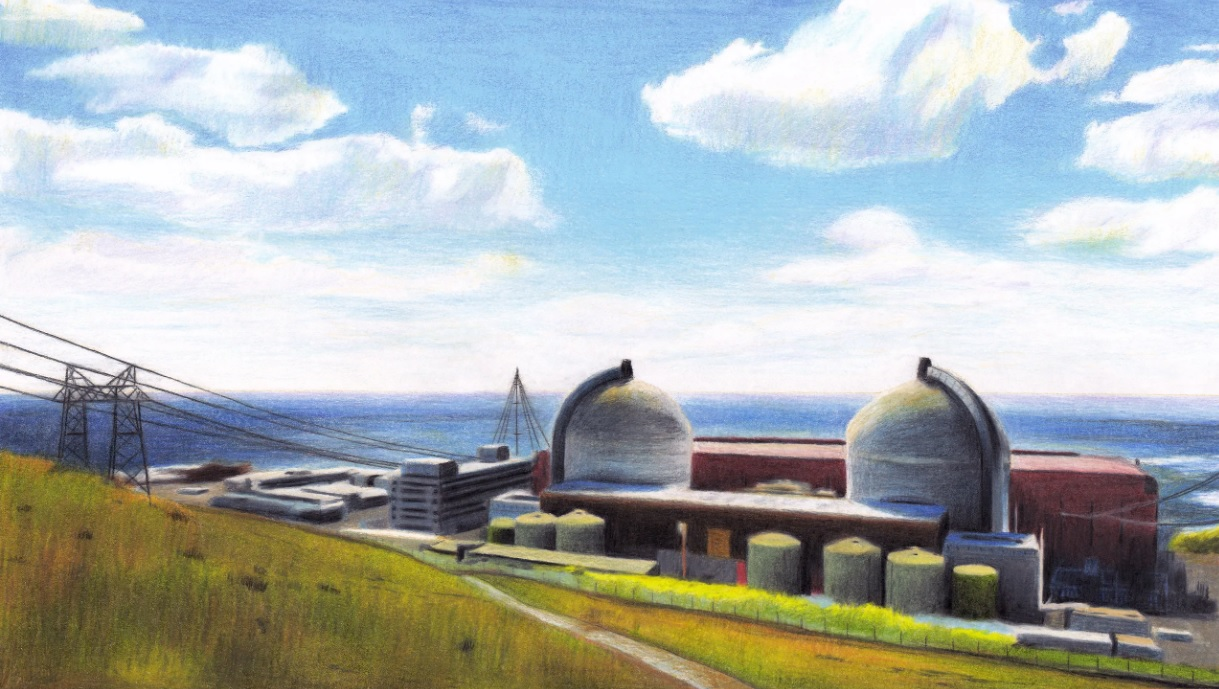
In 2004, Heather Hoff was working at a clothing store and living with her husband in San Luis Obispo, a small, laid-back city in the Central Coast region of California. A few years earlier, she had earned a B.S. in materials engineering from the nearby California Polytechnic State University. But she’d so far found work only in a series of eclectic entry-level positions-shovelling grapes at a winery, assembling rectal thermometers for cows. She was twenty-four years old and eager to start a career.
Never Attempt to Solve a Problem….. When the Solution Has Been There for a Long Time

BY: Taras Lyseenko – November 16, 2020
The solution: Take the uranium-235 isotope, add a neutron to create unstable uranium-236, which splits (fissions), releasing a lot of energy. Use that fission energy to turn water into steam, and turn turbines, which generates electrical energy. Nuclear energy is the solution to a clean energy future, and one that ends our dependence on foreign oil.
For decades, the United States Department of Energy (DOE) has spent billions of dollars researching and developing this solution that is, because of the expertise invested, the safest, cleanest, carbon-free technology to produce abundant amounts of electrical energy. The problem with implementing this solution is the United States Congress.
We keep electing people to that body who choose to use energy generation as leverage to gain political power, rather than doing what is best for the American public. On the liberal side, they play on the altruistic fantasies of their followers with the myths of “renewable” energy generation, such as wind and solar, all the while ignoring the truth that these forms are inefficient and harmful to the environment.
Conservatives pretend that “market forces” will bring forth the next generation of nuclear energy. They ignore the fact that there are socialized agencies such as the Nuclear Regulatory Commission that make advancement almost economically impossible. However, we as a nation will keep on doing research projects at the DOE’s National Laboratories, handing out pay checks and accolades for minor incremental technology advancements that will in all likelihood never see commercial applications unless we demand that Congress act in a responsible manner.
There are some easy to understand truths. Advanced nuclear reactor designs are well developed and understood. Spent fuel can and should be recycled providing centuries of fuel resources supplying the reactors. The recycling technologies exist and should be commercialized in the United States. Advancing the next generation of fission will propel advances in electric vehicle development (at present, the vast majority of such vehicles are charged by burning fossil fuels), bring forth spin-off applications such as high-speed electromagnetic rail systems, and ward off the developing catastrophic problem of future supplies of fresh water.
It does not matter whether your issues of concern are the changing climate or the fact that we will at some point run out of carbon-based fossil fuels. We, as a nation, need to advance the next generation of nuclear energy. We must convince the United States Congress to act in our best interest and champion the greatly expanded deployment of nuclear fission.
VIRGINIA’S NUCLEAR ENERGY’S LAND FOOTPRINT is quite small
Nuclear energy produces massive amounts of carbon-free electricity on less land than any other clean-air source.
A typical 1,000 -megawatt (MW) nuclear power plant (NPP) facility in the United States needs a little more than 1 square mile to operate.
- Virginia’s Lake Anna NPP generates 1,892 MW on 1.7 square miles.
- Virginia’s Surry NPP generates 1,678 MW on 1.3 square miles.
Combined they produce 3,500 MW 24 hours a day 365 days a year on 3 square miles (40% of Virginia’s electricity).
Nuclear Energy Institute (NEI) states that wind farms require 360 times more land area and solar photovoltaic plants require 75 times more land area to produce the same amount of electricity as nuclear energy.
So, for wind to equal the same amount of electricity produced by both Virginia NPP’s would require (3 X 360 = ) 1,080 square miles. To put that in perspective, you would need more than 1,505 wind turbines to produce the same amount of electricity.
For solar farm to equal the same amount of electricity produced by both Virginia NPP’s would require (3 X 75 = ) 225 square miles. To also put that in perspective, you would need more than 10,500,000 million solar panels to produce the same amount of electricity.
The above calculations do not include the Capacity factor of the wind or solar facilities. (Capacity factor – the ratio of the total actual energy produced if the plant (generating unit(s)) had operated continuously at the maximum rating). Meaning that the electricity output of the wind and solar facilities capacity is based on if the sun shined 24 hours per day or the proper amount of wind blew 24 hours per day!
So, in reality the electricity produced on an average day from sunshine during the year in Virginia is 7.4 hours a day and it is not cloudy on average of 61.5% of the year, thus making solar only about 20% efficient. The average for wind may be closer to 30%.
Another interesting fact is that a nuclear power plant can operate for 80 years or more (and the used fuel can be recycled), however both solar and wind need to be replaced after 25-30 years a cost factor that is never addressed when implementing these facilities.
Most of these facilities are only 30 to 35 year deals. Besides where are all of those used wind and solar items to go after their lifespan is up?
And just imagine that if two Next Generation Nuclear Power Plants were constructed on even less land, and can be powered on existing Used Nuclear Fuel already in the State, Virginia could be powering 80% of the state on under 5 Square miles and half of that energy could come from recycled nuclear fuel (what some folks call waste!)
The following Virginia map is a visualization of size comparison on Wind – Solar – Combined 2 Virginia Nuclear Power Plants Equal Electricity Output – Land Area Usage Comparison.
This is a True Comparison ONLY IF:
- The sun shined 24 hours a day 365 days a year, which it Does Not!
- The wind blew between 6 to 50 miles per hour 24 hours a day 365 days a year, which it Does Not!
- Nuclear Power Plants produce electricity 24 hours a day 365 days a year, which it DOES!
Both Nuclear Plants power 40% of Virginia. How will renewables power the other 60% if they only produce power only 20-25% of the time?
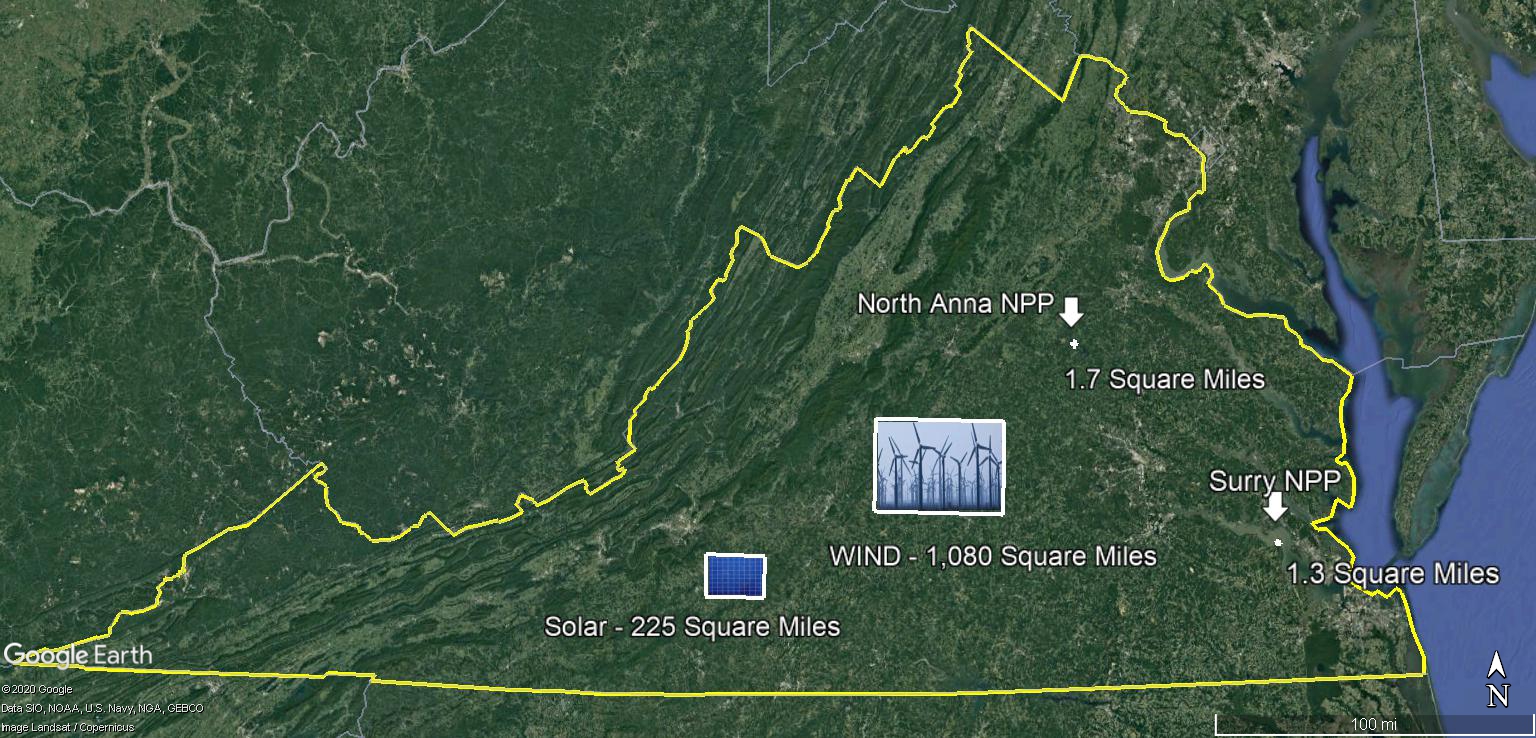
Elysium Industries –
DEVELOPING THE MOLTEN CHLORIDE SALT FAST REACTOR (MCSFR) TECHNOLOGY TO UNLOCK THE ABUNDANCE OF CLEAN, SAFE, AND INEXPENSIVE ENERGY FOR OUR GROWING GLOBALIZED AND DIGITALIZED WORLD
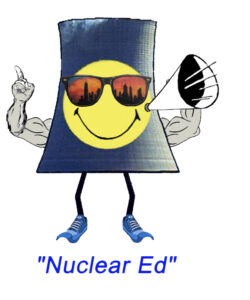
It’s only waste if you waste it! It is not too expensive to Recycle Used/Spent Nuclear Fuel…. It is too Expensive Not to Recycle it! It is a Good thing & the Right thing to do for Virginia and the United States of America!
See Nuclear Ed’s latest Posts on the Facebook Page!

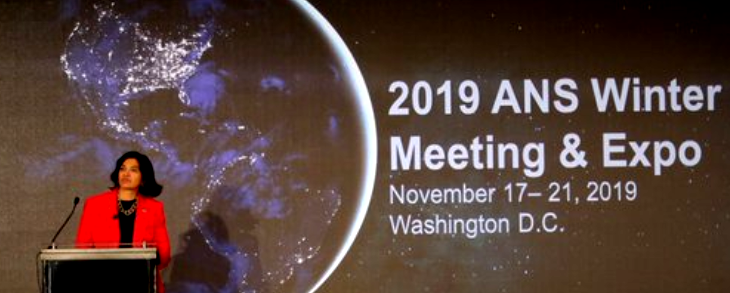
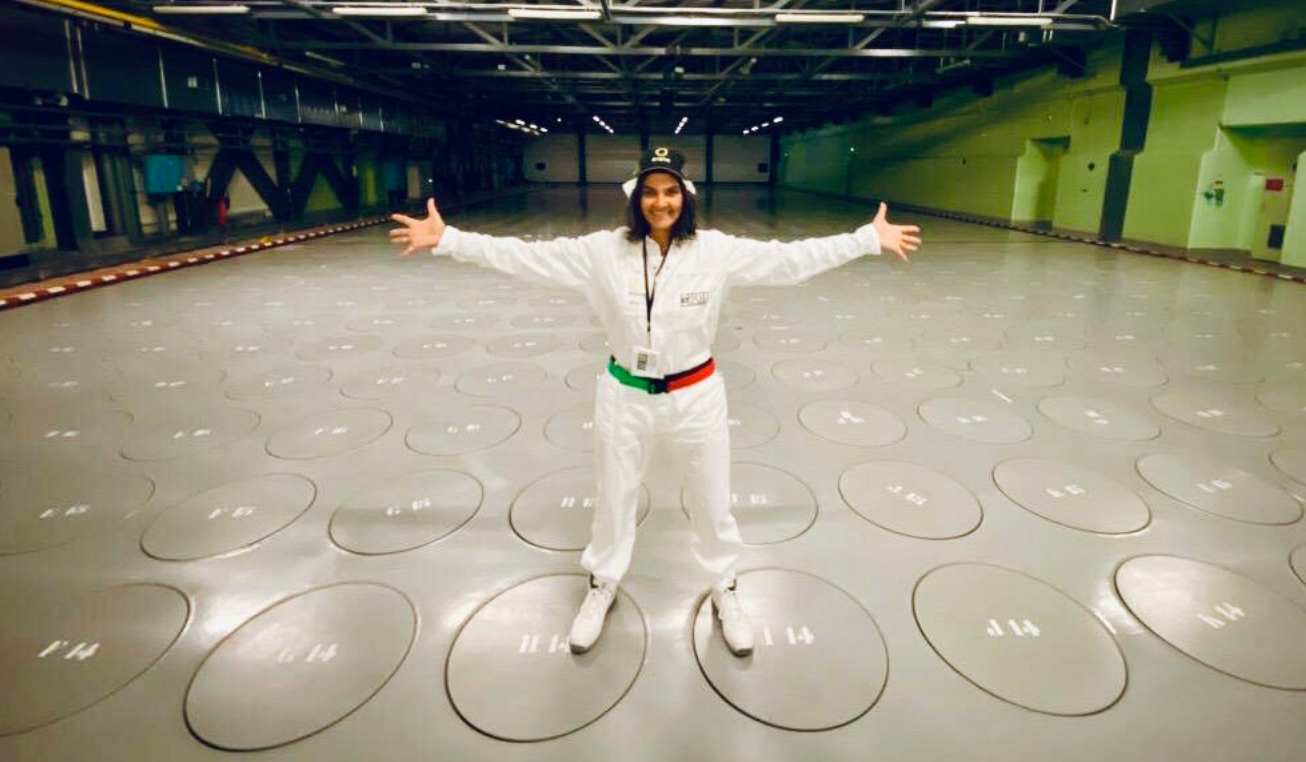
At the opening presentation on Monday November 18, 2019 at the American Nuclear Society’s Winter & Expo Dr. Rita Baranwal, Assistant Secretary of the Office of Nuclear Energy at the U.S. Department of Energy (DOE) stated that along with Advancing Nuclear Energy, Recycling Used/Spent Nuclear Fuel should be part of the US Policy in Nuclear Energy Production.
Right after the presentation my colleague Steve Curtis and Dr. Rita Baranwal were able to briefly speak and she requested to setup a meeting with Steve Curtis and me (Tom Dolan). We are moving swiftly forward in the right direction!
I do not think that I have heard any one say it better than Dr. Rita Baranwal:
Yes!! Standing directly over vitrified, Remnant high-level rad waste (post-Recycling 96% of Used fuel), in a room that stores >20 years of it.
It’s only waste if you waste it!
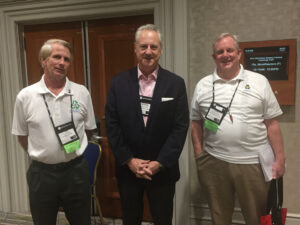
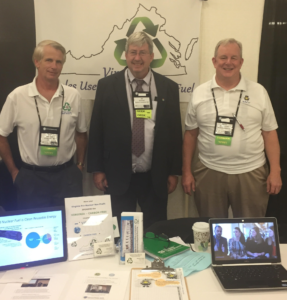
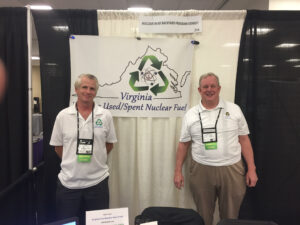 Super Bowl 54 was Powered by the 80 year Turkey Point Nuclear Power Plant Reactors.
While at the same time protecting the: American Alligator, Manatee, and Humans from extinction. As well as NO – SOx, NOx, PM2.5, CO, or CO2 emissions! And No solar powered the Super Bowl was possible. It was at Night!
Super Bowl 54 was Powered by the 80 year Turkey Point Nuclear Power Plant Reactors.
While at the same time protecting the: American Alligator, Manatee, and Humans from extinction. As well as NO – SOx, NOx, PM2.5, CO, or CO2 emissions! And No solar powered the Super Bowl was possible. It was at Night!
Tom Dolan’s presentation before the Virginia Nuclear Energy Consortium Authority – 9-12-2019
 Steve Curtis – YouTube & Radio Lectures
Steve Curtis – YouTube & Radio Lectures
The First Clean Power: The Science of Nuclear Electricity Generation
Heidi Harris Interview with Steve Curtis on Yucca Mountain – July 18, 2018
Spent Nuclear Fuel Interview Fargo “the Flag” with Steve Curtis – August 20, 2019
Don’t have to believe us, but the DATA and Numbers Don’t Lie!
Argonne National Laboratory explains Nuclear Fuel Recycling with a technique called Pyroprocessing.
I was fortunate enough to be introduced to and speak with Michael Shellenberger on Recycling Used/Spent Nuclear Fuel issues by Citizens for Nuclear Technology Awareness’ Executive Director – Jim Marra.
CNTA’s 28th Annual Teller Lecture “Why Nuclear is in Crisis” by Michael Shellenberger 10-16-19
Climate guru uses science to debunk HBO’s ‘Chernobyl’ on Glenn Beck’s Radio Show – July 9, 2019
Michael Shellenberger takes us through HBO’s “Chernobyl” to explain the truth about nuclear energy. Watch this clip to learn how people looking at their iPhones while walking or driving is responsible for more deaths each day than the Chernobyl catastrophe.
To Start Off with……… 7 Things The Simpsons Got Wrong About Nuclear!

Pro-Nuclear insights video from a popular comedy show about politics in Germany
MUST READ SUBTITLES – It is pro-nuclear which is significant because the Government shut down (or is shutting down) all the nuclear plants in the country in favor of wind and solar. Germans pay triple for their power and their air quality has significantly degraded because they replaced nuclear power with brown coal.
Some NOTES:
- For Fukushima, the lung cancer is this guy got is not attributable to the reactor.
- You know the Chernobyl deal, so the 4000 deaths are a fairy tale.
- Of course we know about recycling so it does not stay a danger for “100,000” years, which is a figure people pull from their a** with no reference base.
We MUST reduce CO2-emission quickly, else global warming will take over. Switching to wind turbines and solar panels is taking too long. There is another way of generating electricity without CO2-emissions: nuclear energy. But because a lot of people find nuclear energy scary and stupid, it has to leave the taboo-realm first.
Some whimsical nuclear melodies, prior to Nuclear ED!
Clean Power Forever – EBR-I Music Video feat. Eric Meyer
A musical reflection on the ramifications of 100 percent renewable energy for planet earth.
Big Green Taxi
A video on apples to apples Economics over the lifetime of a nuclear plant vs a natural gas plant. it is about a half hour but well worth watching to truly understand the lifetime costs and income of it all!
Economics of Nuclear Reactor
What are the costs to construct, fuel and operate a nuclear power plant compared to a natural gas power plant. Compares capital cost and fuel costs and looks at how the cost over time should be analyzed. A great video series of clear and concise videos by Professor David Ruzic on his Illinois EnergyProf YouTube channel!
Dealing with the Used Fuel (Reprocessing)
What comes out of a nuclear reactor and how and why you would want to separate the fission products from the actinides (trans-uranics). The radiotoxicity of the wastes vs time. How reprocessing has been done and is being done around the world.
Reactors of the Future (Generation IV)
Difference of the future reactors, generation IV, from the ones of today and how they may be more efficient by running hotter with less down time, and safer. High-Temperature Gas-Cooled reactor, Helium-Cooled Very-High-Temperature reactor, Lead or Salt cooled reactor, and the Pebble-Bed reactor, are all described.
STEM Resources on Nuclear Energy
Nuclear Power Pack: 3 Can’t Miss STEM Resources on Nuclear Energy
Department of Energy Education Links & Downloads
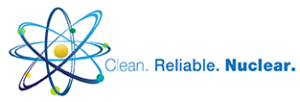
5 Fast Facts about Nuclear Energy
Ultimate Fast Facts Guide to Nuclear Energy – eBook
Millennial Nuclear Caucus
Energy By the Numbers – Nuclear Energy
External Nuclear Education Links
Introduction to nuclear energy
History of Nuclear Energy
What is nuclear energy?
What is nuclear recycling?
What is radiation? What is radioactivity?
What is Nuclear Waste?
National Geographic – EXPLORER MOMENTS:
Can Reusing Spent Nuclear Fuel Solve Our Energy Problems?
Articles & YouTube
A Very Fast, Very Safe, Very SLIMM Nuclear Reactor
Maryland denies permits for Origis Energy’s 32.5MW Solar Panel project
Nuclear: Calgary, Alberta
Papers & Studies
MIT Energy Initiative study reports on the future of nuclear energy
- How can the world achieve the deep carbon emissions reductions that are necessary to slow or reverse the impacts of climate change? The authors of a new MIT study say that unless nuclear energy is meaningfully incorporated into the global mix of low-carbon energy technologies, the challenge of climate change will be much more difficult and costly to solve. For nuclear energy to take its place as a major low-carbon energy source, however, issues of cost and policy need to be addressed.
MIT’s “The Future of Nuclear Energy in a Carbon-Constrained World,”
- released by the MIT Energy Initiative (MITEI) on Sept. 3, the authors analyze the reasons for the current global stall of nuclear energy capacity – which currently accounts for only 5 percent of global primary energy production – and discuss measures that could be taken to arrest and reverse that trend.

